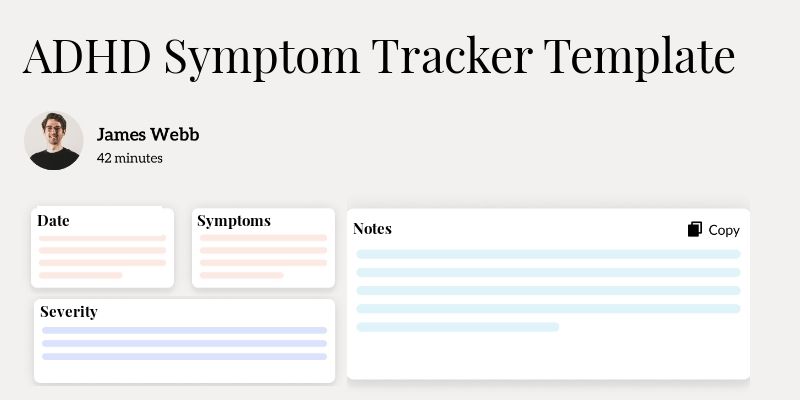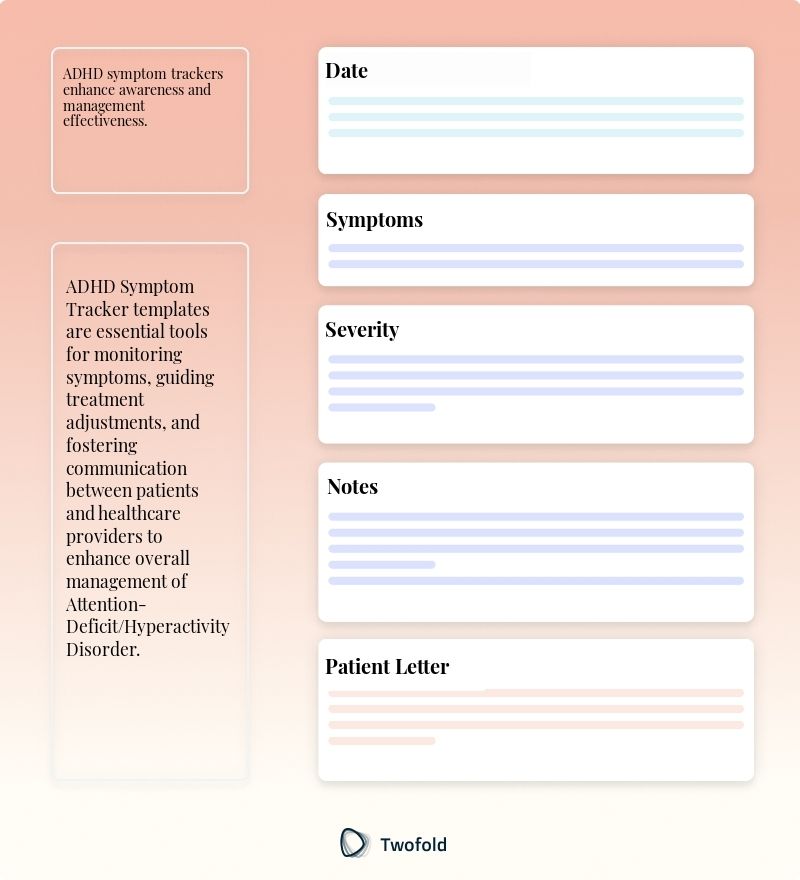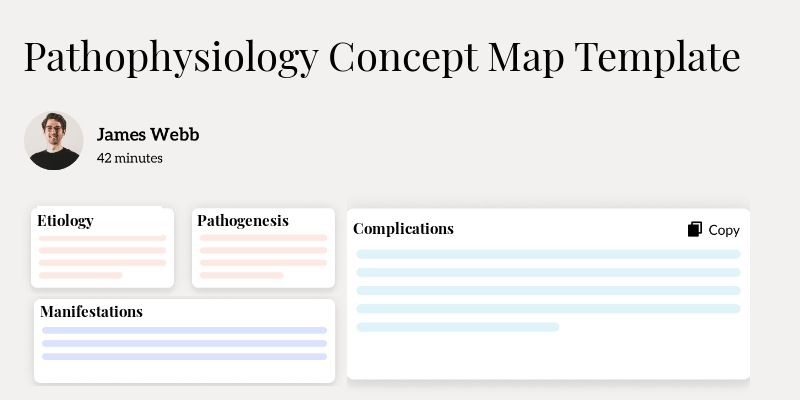
ADHD Symptom Tracker Template
Imagine trying to keep track of every symptom and behavior related to ADHD without missing a beat. It's like juggling with too many balls and there's always the fear of one dropping. For parents, caregivers, and professionals, managing ADHD can be overwhelming. The good news? There's a template that can streamline this process and make life a tad bit easier: the ADHD Symptom Tracker Template.
What Is a ADHD Symptom Tracker Template?
The ADHD Symptom Tracker Template is a structured framework designed to consistently record and monitor symptoms associated with Attention‑Deficit/Hyperactivity Disorder. This tool aids caregivers, educators, and individuals in observing patterns and determining effective management strategies.
This template can be adapted to meet specific needs, enabling a comprehensive approach to managing ADHD. By maintaining precise symptom records, it becomes easier to collaborate with healthcare providers on treatment plans.
Key Components of a ADHD Symptom Tracker
The template includes essential elements for effective tracking. Here are the key components:
- Symptom List: A comprehensive checklist that includes common ADHD symptoms.
- Frequency: A section to rate how often each symptom occurs.
- Severity: A scale to indicate the intensity of the symptoms on a given day.
- Triggers: An area to note any events or environments that might trigger symptoms.
- Notes: A space for additional observations or comments that may be relevant.

How to Use a ADHD Symptom Tracker Template: Step-by-Step Process
Step 1: Initial Setup
Start by downloading or printing the ADHD Symptom Tracker Template and familiarizing yourself with its sections.
Step 2: Customize the Template
Adjust the symptom list by adding or removing items to tailor it to the individual's experience.
Step 3: Daily Recording
At the end of each day, take five minutes to record the day's symptoms, noting their frequency and severity.
Step 4: Weekly Review
Set aside time once a week to review the entries, looking for any patterns or changes in behavior.
Step 5: Monthly Evaluation
Sit down at the end of each month with a healthcare provider to evaluate the data and discuss potential adjustments to intervention strategies.
Benefits of a ADHD Symptom Tracker
Benefit | Description | Impact |
|---|---|---|
Consistent Monitoring | Ensures regular observation of symptoms over time. | Identifies patterns, triggers, and trends. |
Improved Communication | Facilitates better dialogue between caregivers and medical professionals. | Enhances treatment planning and adjustments. |
Proactive Intervention | Allows for early detection of changes in symptoms. | Enables timely intervention to manage symptoms effectively. |
Stakeholders in ADHD Symptom Tracker
Several key stakeholders can benefit from using an ADHD Symptom Tracker:
- Parents: By continuously tracking their child's symptoms, parents can identify specific triggers at home, such as screen time, assisting in eliminating them.
- Teachers: By using symptom trackers, educators can develop individualized strategies to assist students during classroom activities.
- Healthcare Providers: Doctors can make more informed decisions about treatment adjustments by assessing symptom records during consultations.
- Individuals with ADHD: Self-awareness is enhanced by involving individuals directly, encouraging them to identify and understand their symptoms.
Example of a ADHD Symptom Tracker PDF
Below is a sample PDF illustrating how a well‑structured ADHD Symptom Tracker might appear:
(This is where you would describe the layout or mention the inclusion of a PDF link or image)
Real-World Use Cases: Practical Impact of the ADHD Symptom Tracker Template
In a variety of situations, the ADHD Symptom Tracker Template proves to be invaluable:
- In the Classroom: A teacher in an inclusive classroom used the tracker to monitor a student's symptoms and collaborating with parents led to a tailored learning plan.
- Home Environment: A parent used the tracker to discover that their child's symptoms escalated after consuming certain foods, prompting dietary changes.
- Healthcare Settings: A psychiatrist in a busy clinic compared symptom trends provided by the template to gauge medication effectiveness.
- Self-Management: A teenager used the tracker to recognize patterns connected to stress, enabling them to adopt coping strategies.
Conclusion
The ADHD Symptom Tracker Template is an indispensable tool for managing and understanding ADHD symptoms across a variety of settings. By promoting consistent documentation, fostering communication, and enabling proactive interventions, this template stands as a reliable resource for anyone in need of a structured method to track ADHD symptoms. With real‑world applications that cover classroom, home, and clinical environments, its practical benefits are extensive and clear.
Disclaimer: This article is for informational purposes only and does not constitute legal or medical advice. Always consult professional guidelines and regulatory bodies for specific compliance requirements.

Dr. Danni Steimberg
Dr. Danni Steimberg is a pediatrician at Schneider Children’s Medical Center with extensive experience in patient care, medical education, and healthcare innovation. He earned his MD from Semmelweis University and has worked at Kaplan Medical Center and Sheba Medical Center.
A symptom tracker only helps when it turns raw ratings into usable insights. The FOCUS Loop – Frequency, Onset trigger, Coping used, Update score, Share summary – keeps each entry quick to log and rich enough for treatment tweaks.
- Frequency snapshot: Mark symptom intensity three times a day (morning, midday, evening) so daily rhythms and medication gaps become obvious.
- Onset trigger and coping: Jot the situation that sparked the spike and the strategy you tried (timer, break, movement) to spotlight which tools actually work.
- Weekly share and adjust: Auto-generate a one-page summary with averages and top triggers, then bring it to sessions for data-driven dosage or strategy changes.
Frequently Asked Questions
Reduce burnout,
improve patient care.
Join thousands of clinicians already using AI to become more efficient.

Pathophysiology Concept Map Template
Discover practical Pathophysiology Concept Map Template templates to enhance your documentation efficiency.

Dental Chart Template
Discover practical Dental Chart Template templates to enhance your documentation efficiency.

Medical History Form Template
Discover practical Medical History Form Template templates to enhance your documentation efficiency.

